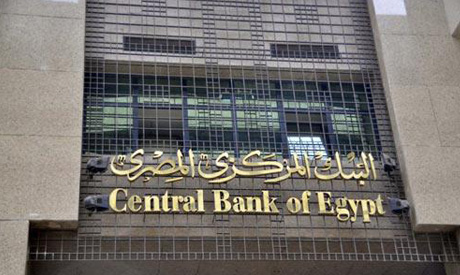
Central Bank of Egypt's headquarters is seen in downtown Cairo (Reuters)
Egypt’s annual urban consumer price inflation (headline inflation) slowed to 13.1 percent in April from 13.3 percent in March, the Central Bank of Egypt (CBE) said on Thursday.
Annual core inflation recorded 11.6 percent in April, compared to 11.59 percent in March, the CBE said.
Economist Riham ElDesoki attributes the slight decrease in April’s annual headline inflation compared to the sharp fall in March (from 14.4 percent to 13.3 percent) to higher monthly inflation figures.
The higher monthly inflation figure of 1.5 percent in April compared to 1 percent in March, as announced by the CBE, is driven by the season factor – Ramadan and Easter holidays – when spending increases, according to ElDesoki.
CI Capital Asset Management Economist Noaman Khalid also attributes the recovery in monthly inflation figures to an increased consumption as well as an expansion of companies’ investment plans.
Khalid adds that a decrease in interest rates signalled that inflation is easing and people have been adapting their lifestyle to increased prices.
After October 2016’s floating of the Egyptian pound to control inflation, the CBE raised key interest rates by 700 basis points, then moved to cut rates by 200 basis points in February as inflation eased.
Khalid does not think these inflation numbers are related to the Ramadan season’s generalised price increase, as high monthly inflation figures have been an upward trend since January.
The announcement of inflation figures comes a week before the Central Bank’s Monetary Policy Meeting is due to decide on key interest rates.
ElDesoki and Khalid expect no change in interest rates next week.
ElDesoki attributes the slight decrease in April’s annual urban headline inflation compared to the sharper fall in March to higher monthly inflation figures.
The economist says her expectation is based on the resilience in inflation changes and the fact that the CBE has already cut interest rates twice since February, so it needs to assess the impact of these cuts on the market.
This is in addition to the expected inflationary impact of the restructuring of energy subsidies in early summer.
Khalid also attributes the expectation to the high monthly inflation figures driven by an increase in consumption, along with the expectation that fuel prices will increase in July (hence driving up inflation).
In core inflation calculations, the CBE uses CAPMAS numbers and removes the goods that are affected by supply and demand shocks (included in headline inflation calculations) and regulated prices, in order to focus on the goods where monetary policy instruments can be effective.
Egypt's draft budget for fiscal year 2018/19 targets 10 percent inflation, a finance ministry statement said last month.
On the same day last year, inflation hit a three-decade high.
Annual headline and core inflation peaked in July 2017 at 33 percent and 35.3 percent following energy subsidy cuts.
More energy subsidy cuts are expected in July.
According to the World Bank’s Economic Outlook for Egypt issued last month, “the high inflation accumulated over the course of FY15-FY17 has lowered the purchasing power of households across the distribution, reducing the positive spillovers of economic growth, and taking a toll on social and economic conditions.”
Egypt is increasing food subsidies by 5 percent in the budget for fiscal year 2018/19 to reach EGP 86.175 billion from EGP 82.177 billion.
“[A decrease in prices] will never happen,” says Khalid, explaining that manufacturers do not lower price tags, but can only provide offers to consumers.
Short link: